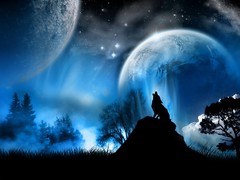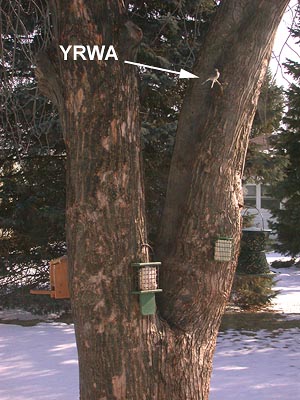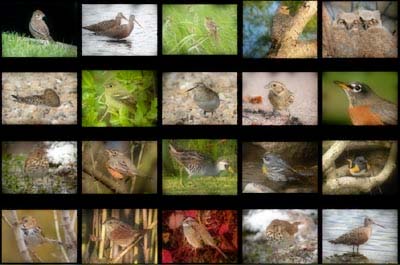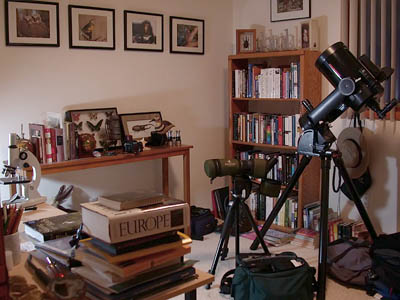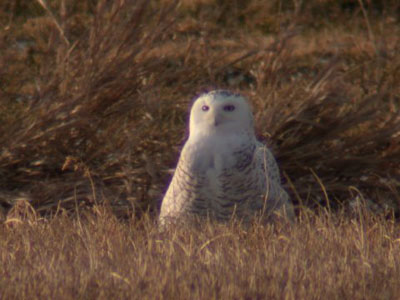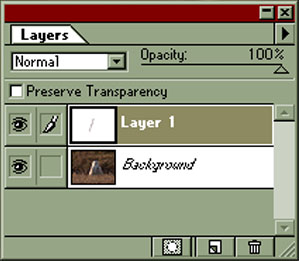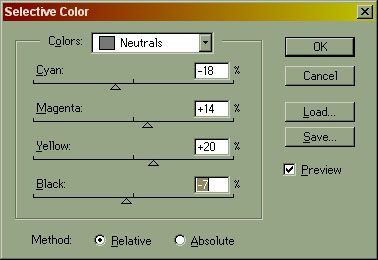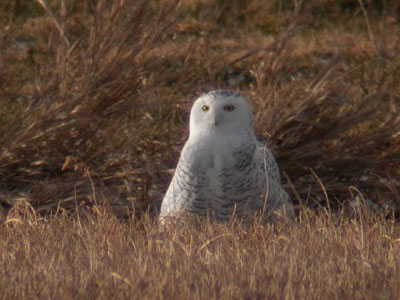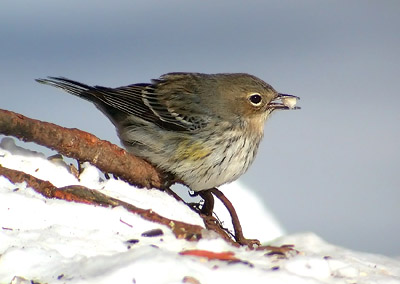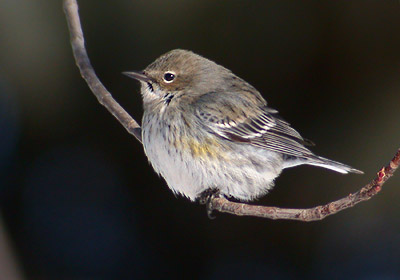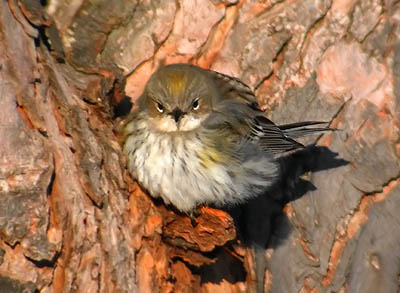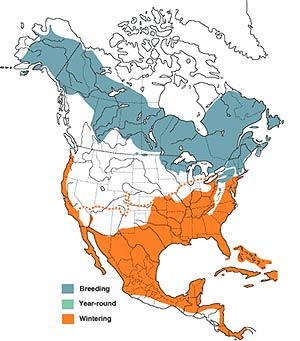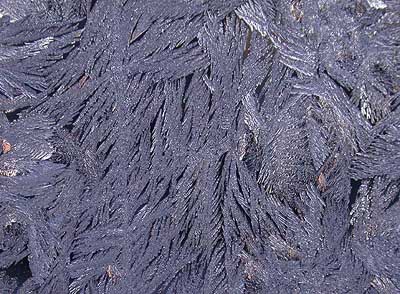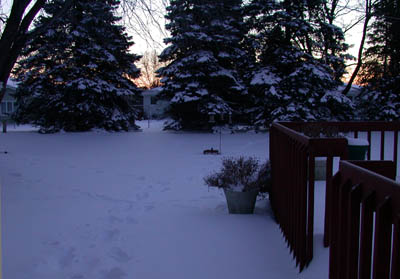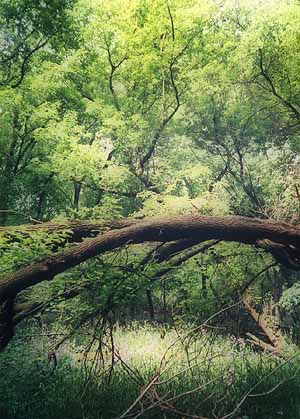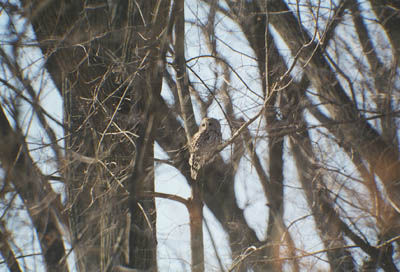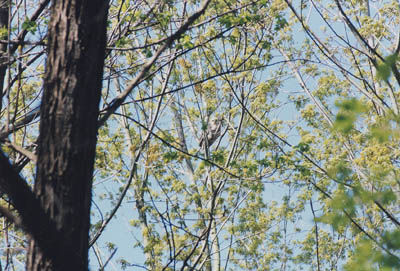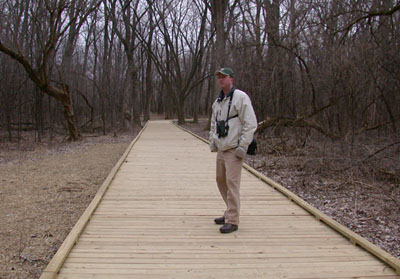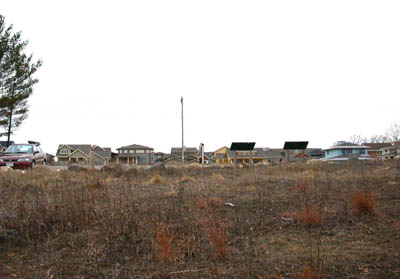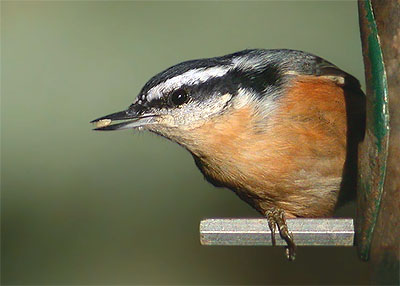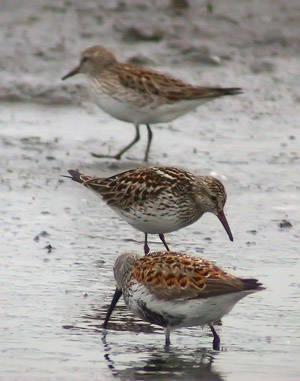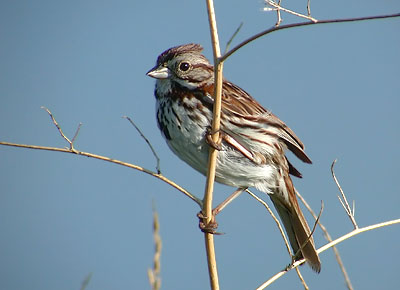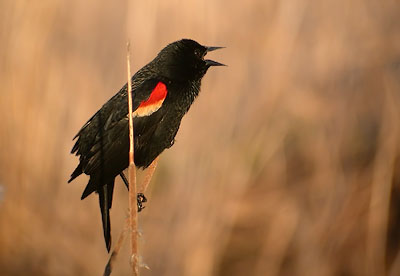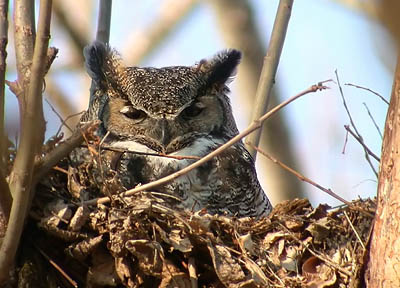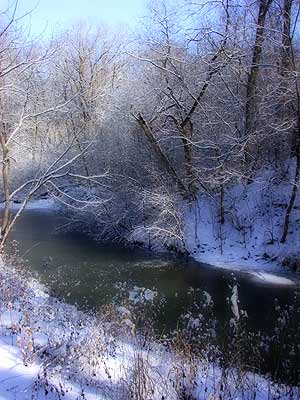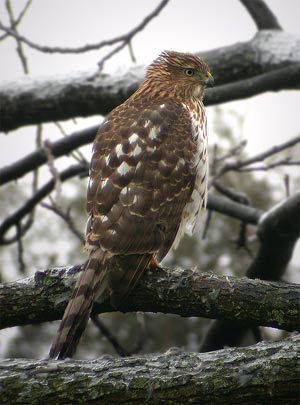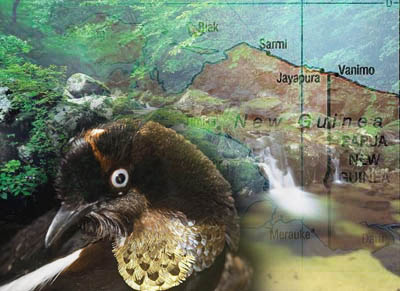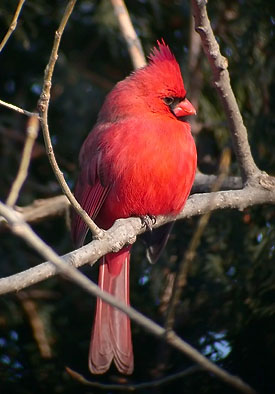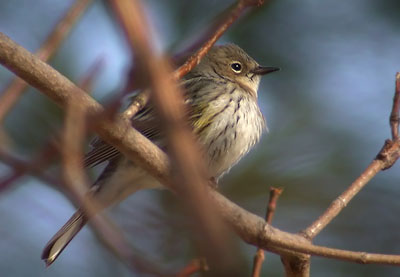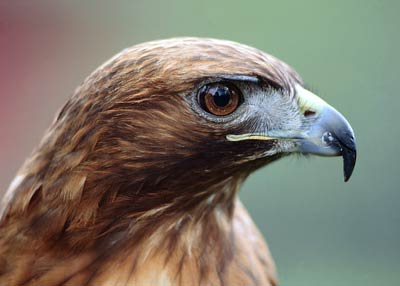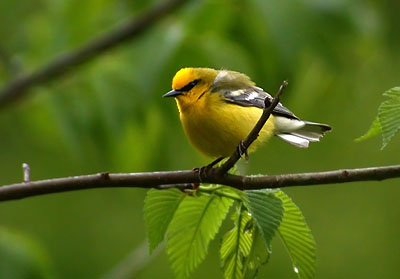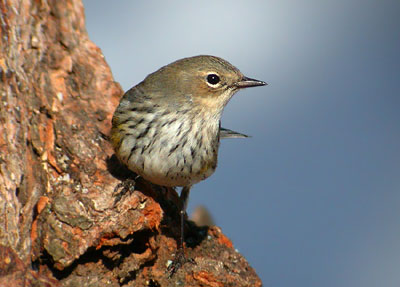
(click on image for larger version)
Hey, don’t get me wrong here…I think it’s super cool having a backyard YELLOW-RUMPED WARBLER through the winter (I love it, as you can plainly tell). However, in the past several days its behavior has changed…just a little. The warbler is getting feisty and territorial toward other birds attempting access to the suet feeders. It almost makes me feel bad for the other small birds. Oh, it’s smart enough to leave the Red-bellied, Downy and Hairy Woodpeckers alone, but it still remains close by and watches their every move.
(click on image for larger version)
There is a thin branch just above the feeders the warbler likes to perch on…here it waits and watches. Sometimes it doesn’t even matter if the offending bird is clear on the other side of the maple - it’s chased completely out of the yard, sometimes even further. Any junco, finch or chickadee that gets too close is met with furious harassment and a barrage of chip-notes. I’ve seen warblers chase each other during spring migration, but this stakeout-like behavior is quite the spectacle. I wonder if it is guarding the food or if it is just a territorial instinct for the species this time of year? Perhaps its brethren to the south also closely guard a small territory over the winter months.
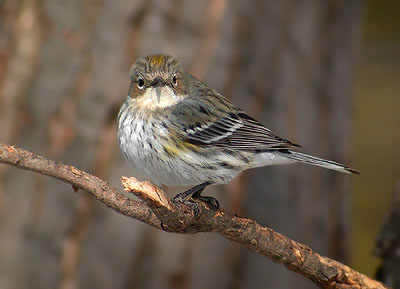
(click on image for larger version)
The warbler isn’t quite fast enough to give the Red-breasted Nuthatches much grief, and interestingly enough it doesn’t bother the Brown Creeper. But finches, juncos and chickadees represent a big problem that apparently must be met with a forceful reaction from the warbler. As much as I enjoy this bird, spring probably can’t come soon enough from the perspective of some of the other songbirds of our backyard.
All images © 2006 Mike McDowell










